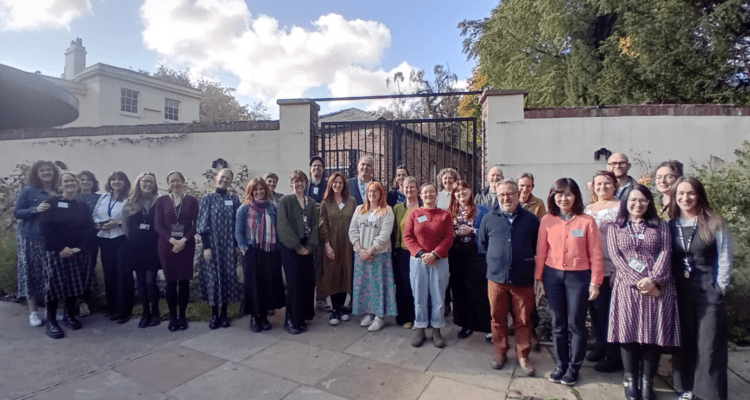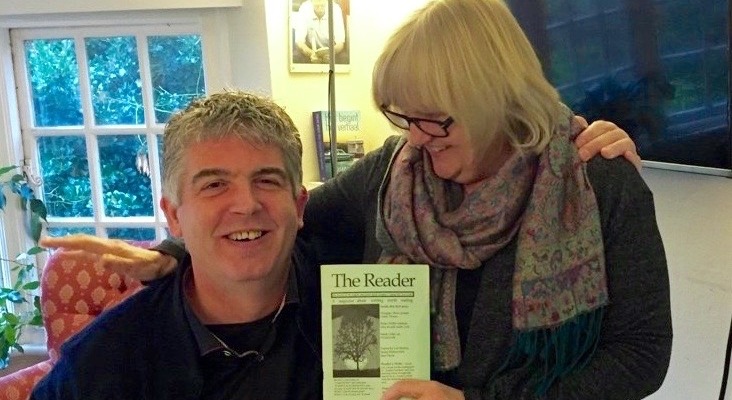A Japanese Adventure… Part 1
Leila Green, along with her best friend Nikki, spent three months backpacking through Japan, New Zealand and Australia, leaving in early February and returning at the beginning of May. She recalls her experience of the customs and culture of Japan, as well as revealing her reading choices for the duration of her stay in the country.
"Nihon e yokoso!" - Welcome to Japan!
Traditional Buddhist Art Gallery, Kobe City Museum
Walking through the gallery my eyes are drawn to a row of warm faces belonging to three statues of priests. Their bronze smiles exude an aura of friendliness and calm due to exaggeratedly broad smiles offset by broad noses. I can't help but smile in return, and find that my eyes remain fixed naturally on the generous sized noses which appear to represent the literal centrepoint of a generous spirit. I recall two statements I've read on my travels: "whereas we in the West point to our chest when we want to say 'I'...the Japanese point to their noses with their index finger"; "She would've been quite pretty if her nose wasn't so small." The first is a piece of advice included in my bitesize version of Teach Yourself Japanese that I received free with The Sunday Guardian a timely two weeks before our flight from Heathrow to Narita; the second is an observation made by Komura, the protagonist of Haruki Murakami's 'UFO in Kushiro', in After the Quake (a book I'd been saving to read in Kobe). The booklet is now dog-eared due to its handy pocket size and frequency of use as it's full of useful pointers like this one. The book also bears marks of backpack travel - though more so since our visit to Kobe Museum, where I stamped a variety of stamps detailing logos of the museum on the inlay in order to create a souvenir of my visit. The stamps are probably intended for visiting school children, but I thought my future self about to re-read a collection of stories about the Kobe earthquake might appreciate the "I've been there" statement.
As it happens, and to our surprise (although Lonely Planet suggested would be the case) there's nothing in the museum documenting the infamous national disaster. Only the introduction in the Museum's pamphlet briefly mentions that the collections did not receive any major damage in the event. In Tokyo a few days later (our second visit to the capital, as we chose to bookend our seven day exploration of the Kansai region with Tokyo in case we felt we'd missed out anything of particular interest the first time round) this absence took on a poignant significance as we learned of the Okinawa quake that'd hit earlier that day. The quake occurred not long after the 9.4 quake suffered by Chile, though thankfully it was much lower on the Richter Scale. The following day the breakfast news brought the danger even closer to home as it warned of possible tsunamis and precautionary evacuations of coastal habitants. Every channel displayed a map of the country in the bottom right corner complete with coastal regions highlighted and flashing red, yellow, and green to indicate the relative severity of the threat in each section. Luckily no tsunami transpired. A week later in New Zealand whilst on the Kiwi Experience* I met a luckier girl. She'd been in Chile during the quake, and had thankfully escaped unharmed though the hostel she was asleep in at the time sustained considerable damage. Lucky a second time, she found herself amongst the first and small few (only a planeload of people) to be allowed to leave the country in the aftermath - and as a result found herself harangued by a local TV news reporter. When she left, two days in the quake's wake, buildings were still collapsing and clean water supplies had been exhausted. Hardly surprisingly she said she couldn't bear imagining what it would've be like had she been trapped there longer - as so many other travellers were.
The earthquake is conspicuous in its absence from Murakami's short story collection After the Quake. I found a psychological/structuralist reading of the text to be most helpful, and read the earthquake as symbolic of the protagonists' most prescient personal issues that each had hitherto been afraid to confront. In 'UFO in Kushiro', after sitting silently in front of television reports of the Kobe disaster for three days straight, Komura's wife leaves him. As explanation she writes him a note that includes a line which baffles and haunts him: "Living with you is like living with a chunk of air." The rest of the story plays out like a modern-day fable of self-discovery as Komura finds himself journeying with a box of contents unknown to him (but which he suspects is air) to present to a stranger in an unknown city. When another character suggests sarcastically that the box contains the nothingness within himself which his wife spoke of, Komura reacts with disproportionate violence. This incident forces him to face his feelings of worthlessness and helplessness since his wife's 'unwarranted' departure. For him her leaving him is unwarranted. The only trigger he can pinpoint for her breakdown - logically, and needfully for his sanity - is the earthquake. But as he can't reasonably hold the quake responsible for her falling out of love with him, it is inevitable that he face the possibility that their union was inadequate through their own failings.
'Super-Frog Saves Tokyo' is a more surreal tale. It's an account of a melancholy worker named Katagiri, who appears to be at least passively suicidal. Katagiri is a middle aged bachelor who works for a bank in Shinjuku. He considers himself to be underwhelming in every respect - especially in comparison to his younger brother and sister (whose college fees he paid) who have families of their own. Katagiri returns home from work to find a giant frog in his kitchen who tells him he must save Tokyo from a greater earthquake than the one that hit Kobe the previous week. In order to prevent it, Frog must go into battle with Worm (a giant worm who slumbers under Tokyo) who plans to cause the quake. Frog informs Katagiri that though he can be of no physical help to Frog, Katagiri can use his selfless nature to egg Frog on in the mortal fight. The protagonist, or hero, manages to save the day, and thus overcomes his inferiority complex. However his victory is questionable as it is achieved by his subconscious as he dreams of Frog and Worm's encounter, suggesting that his life will continue to disappoint him in the real world.
*Kiwi Experience: popular coach tour of New Zealand amongst backpackers, including options to do activities (such as canoeing; mountain climbing; black, and white water rafting; horse trekking; bungee jumping; skydiving; quad biking), scenic walks, and learn about Maori culture. Our package covered both the North and South islands: from Auckland to Christchurch.
Share
Related Articles

Celebrating the first ever International Shared Reading Conference
‘It has been a wonderful day - great meeting you all! Loved the Shared reading and getting new knowledge. Inspiring…

Henrik Wig, Sweden: ‘In a world where democracy is in many ways threatened, Shared Reading can be a counterforce’
Literature teacher Henrik has been running Shared Reading groups across southern Sweden for six years with children’s groups and at…

Reader Revisited: An Interview with Het Lezerscollectief (The Readers’ Collective)
We're taking a trip down memory lane and revisiting articles from The Reader Magazine. This article first appeared in issue 73.…


